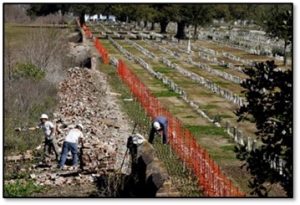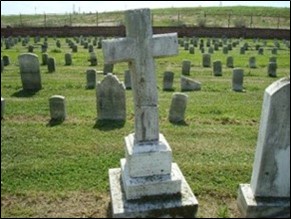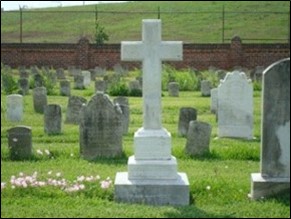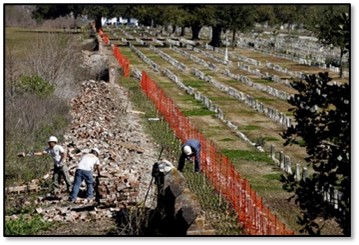Client: Pishny Restoration Services
Construction Budget: $250,000 – Headstone Repair; $4.5 Million – Historic Brick Wall Reconstruction
Historical Headstone Restoration
Speweik Preservation Consultants (SPC) was commissioned by Pishny Restoration Services to provide technical support to comply with the U.S. Department of the Interior’s Secretary Standards for Rehabilitation in the harvesting, cleaning, and repair scope for the damaged historic marble headstones. SPC designed and implemented the headstone repair strategy and carried out the necessary testing and research to establish the stone treatment requirements that matched the original historic marble. Pishny masons were trained in the proper tool selection combined with the details of mixing and applying a custom formulated stone repair mortar. SPC also developed a unique stone-stitching and pinning technique to re-attach the missing headstones pieces that were later found after the Katrina water receded. The National Park Service preservation architects and cemetery staff were very pleased at the level of care and workmanship delivered by the Pishny masons. All 74 historic headstones were repaired and the stone treatments blended seamlessly into the historic texture and color of the original historic marble.
Historic Brick Wall Reconstruction
SPC was also commissioned by WW Masonry Restoration & Waterproofing to provide technical support to assist in the development of a replacement mortar formulation that would be acceptable to the National Park Service Architects in the reconstruction of the historic brick wall. The contractor had made several attempts at matching the historic mortar specification requirements himself but had failed repeatedly with his submittals. Frustrations grew and the project was delayed. John Speweik traveled to the site and gathered the samples and information he needed. While there John also offered helpful advice to the masonry contractor on the historic brick inventory sequencing operation as well as more effective methods of historic mortar removal. He returned to Chicago and authored a technical report based upon his testing and research to match the historic mortar, which the National Park Service architects approved the following week.




